Aims of the activity and description of target group
This activity expands on the results of Part 3, Activity 3: Managing interests and expectations. In this activity, participants will take a closer look at all the people involved in the project and their expectations. Participants will develop strategies on how to address and fulfill these expectations. The activity is suitable for researchers and citizens in a group or individual learning setting. All other sessions should be carried out beforehand.
Resources, Materials needed
- Paper, pen, color pencils
- Results from Session #3, Activity 3: Mange interests and expectations
- Digital device for editing Expectation Management template (Modul2_6-3-Template_Expectation_Management.docx)
- Expectation Management Example: Modul2_6-3-Example_Expectation_Management.pdf
Duration
60 minutes
Step 1 – Try it yourself
This step should be done as a preparation beforehand as it may take some time to register and take part in a project.
The best way to experience what it feels like to be a volunteer in a Citizen Science project is to become a volunteer in a Citizen Science project yourself. Go to our Citizen Science Repository and choose a project to participate. Make notes on the following questions:
- How does it feel to take part in a Citizen Science project?
- What made you feel good?
- Where did you feel uncomfortable?
- Was it implemented well?
- What problems did you encounter?
Step 2 – My expectations of the volunteers (5 minutes)
Take a sheet of paper and give it the heading "What I expect of the volunteers". Think about what you expect from the volunteers:
- Why they are taking part in the project.
- How they contribute to the project.
- How they behave in the project.
- How they feel about the project.
- ...
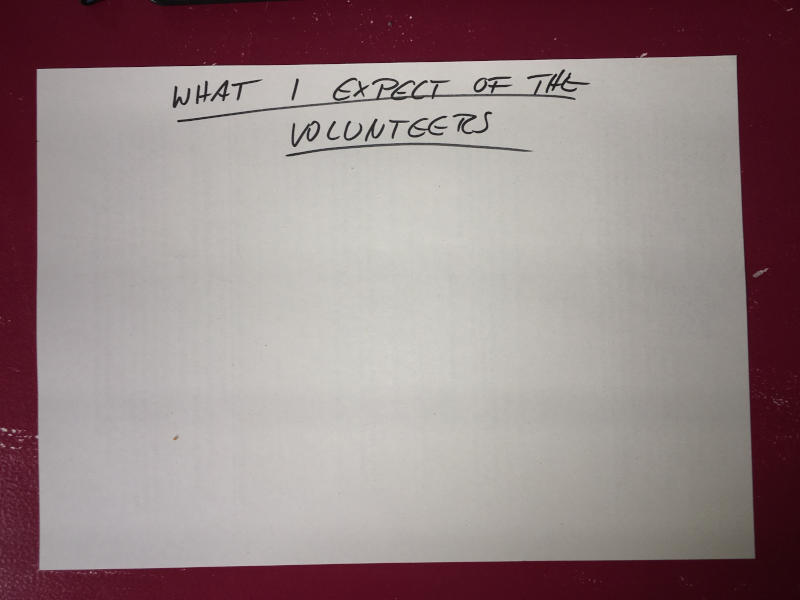
Example
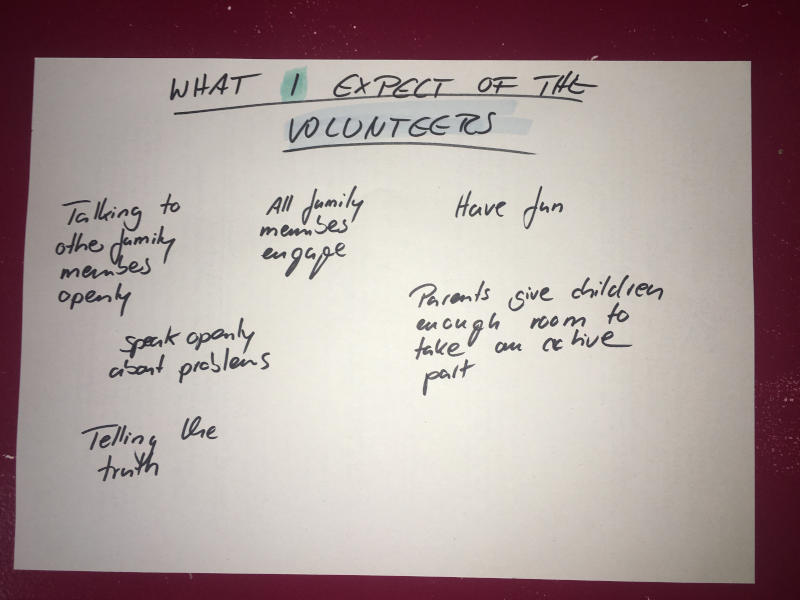
Step 3 – Expectations of the volunteers (5 minutes)
Take another sheet of paper and give it the heading "What volunteers might expect from me". Write down what you think the volunteers expect from you and the project. If you have the opportunity to talk to potential volunteers, you can also ask them directly and check your assumptions:
- How the project works.
- How they are involved in the project.
- How they can contribute to the project.
- What is expected of them.
- ...
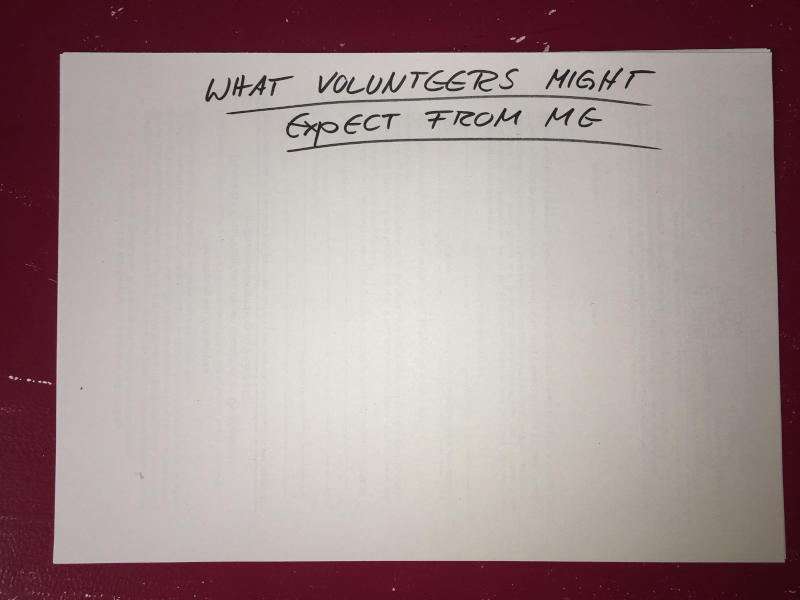
Example
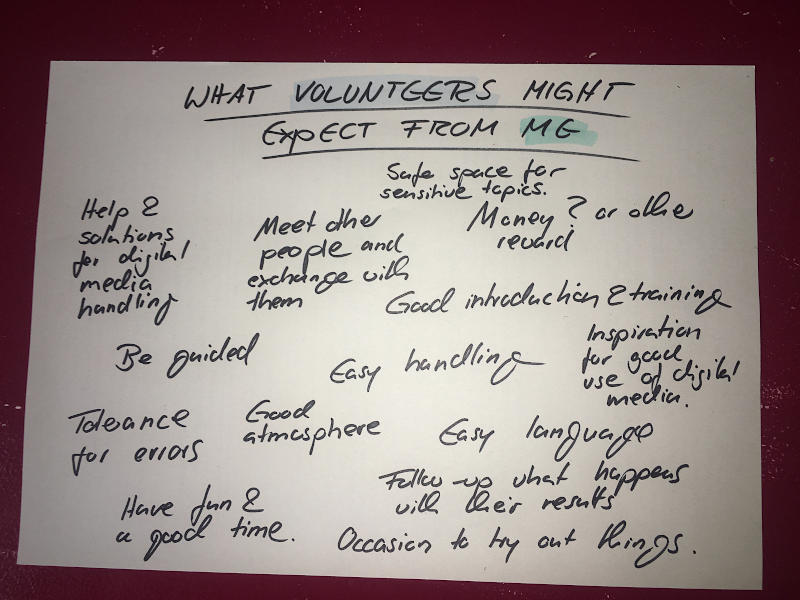
Step 4 – My expectations of the team (10 minutes)
Now let’s take a look at the expectations around your project team. Take another sheet of paper and give it the heading "What I expect of the team". Think about what you expect from the team:
- How they identify with the project.
- How they interact with volunteers.
- How they contribute to the project.
- How they work together.
- How they feel in the project.
- How they address problems.
- ...
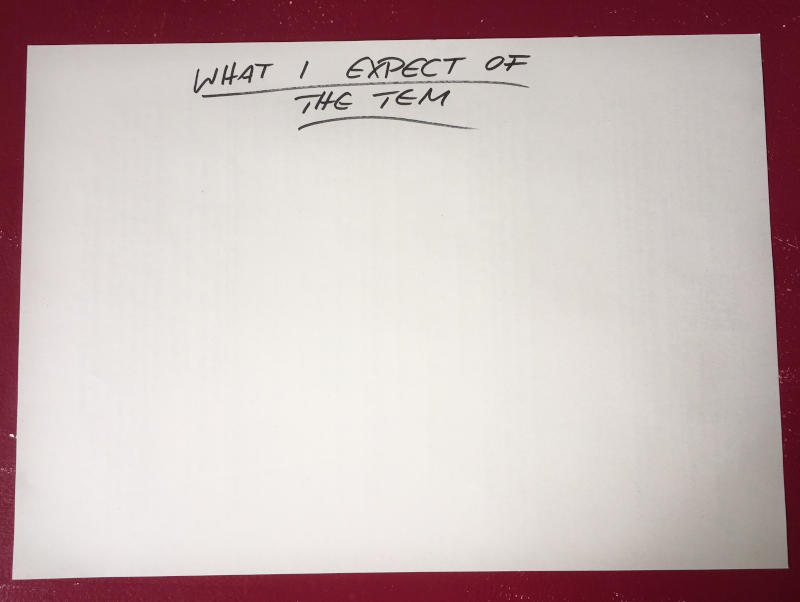
Example
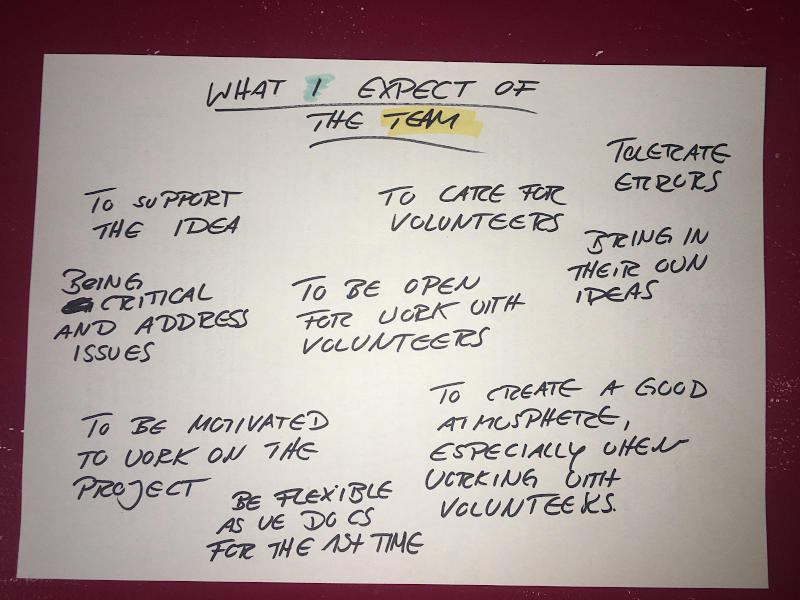
Step 5 – The team’s expectations (10 minutes)
Now adopt the team's perspective. Take another sheet of paper and give it the heading "What the team expects from me". Write down what you think the team expects from you and the project. If your team is already set up and you have the opportunity to talk to them, you can also ask them directly and check your assumptions:
- How they will contribute to the project.
- How they will be prepared for their tasks.
- How they will work with the volunteers.
- How the project will be organized.
- How they will be involved in the planning of the project.
- How they work together.
- How the team works together.
- How difficulties are dealt with.
- What is done to create a good team spirit.
- ...
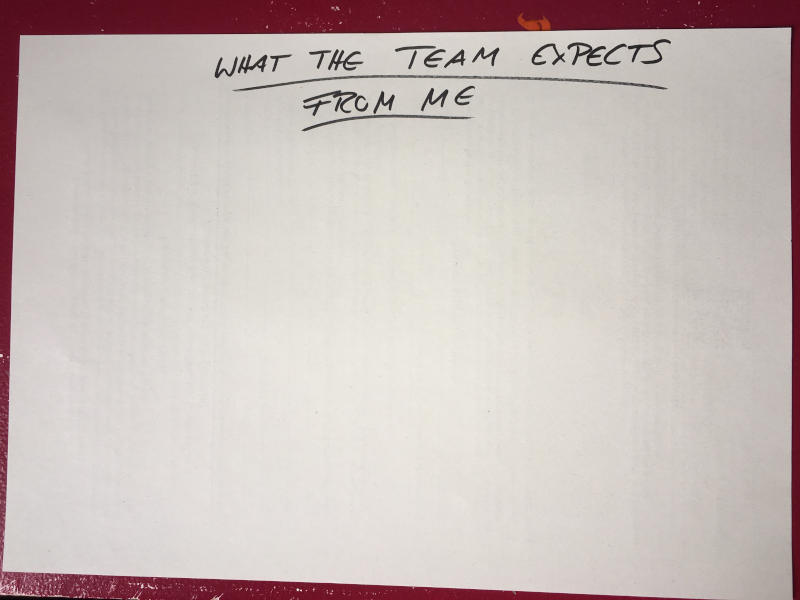
Example
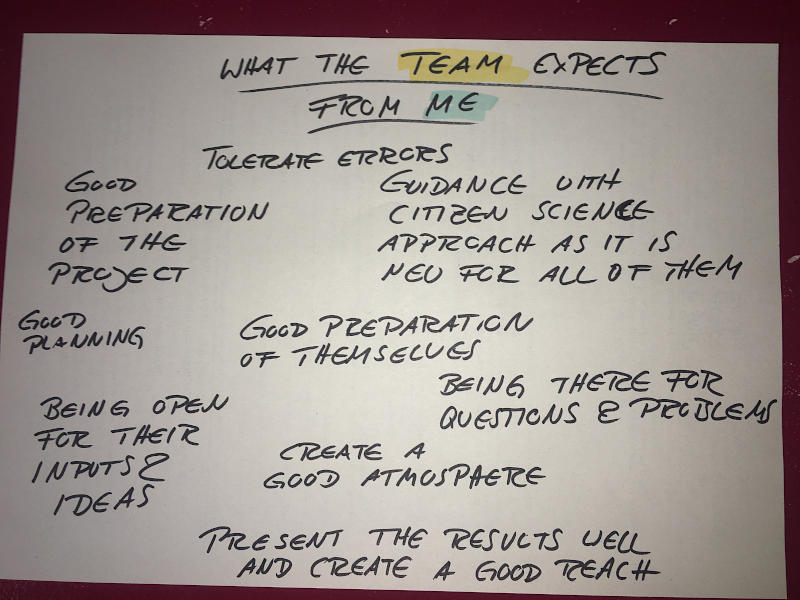
Step 6 – Expectation Management template (30 minutes)
Open the Expectation Management template (Modul2_6-3-Template_Expectation_Management.docx) and enter all expectations you gathered in the previous steps into the table. Add expectations of further groups, like sponsors, external partners,...
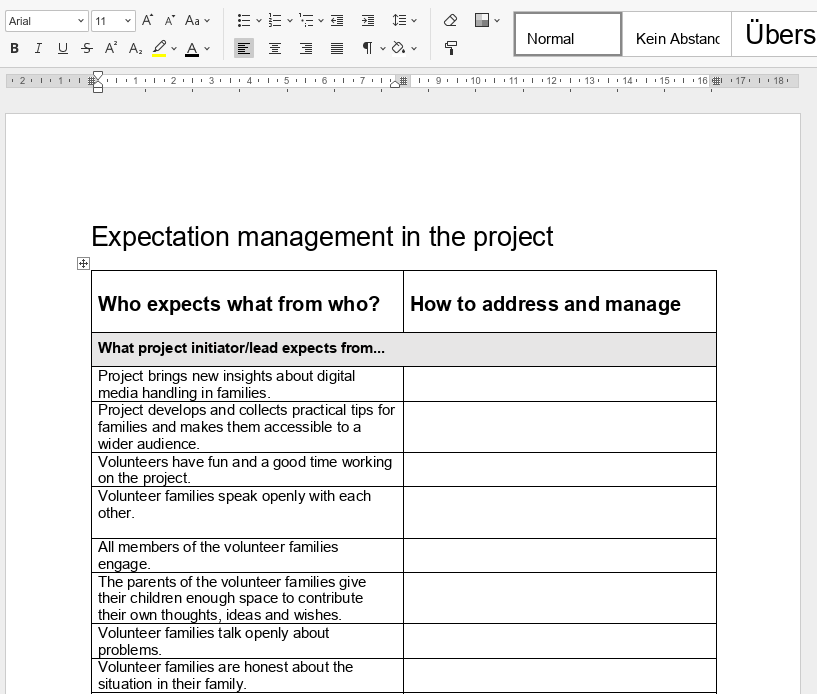
For each expectation define measures that help you to to manage them in the project. Think about:
- Measures to prepare the project and people
- Reporting measures
- Team meetings and exchange formats
- Event formats
- Communication channels
- Feedback options
- ...
Further examples are included in the example file: Modul2_6-3-Example_Expectation_Managemetn.pdf
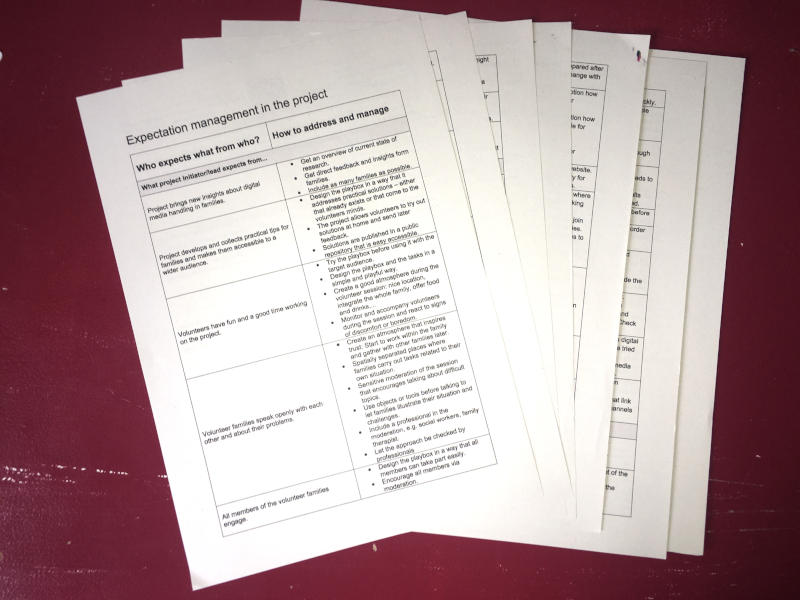
Participants may not be able to complete the document in the allotted time. Try to get as far as possible and do the rest at home.
How to use the results for the project:
- New tasks that have arisen during this activity should be included in the project plan.
- The measures should be integrated into further planning:
- Share expectations with the team and discuss together how they can be met.
- Use wording and ideas for presentations, texts, briefings and training.
- Arrange appointments to inform relevant people.
- Find a solution to share information about the progress of the project with other people.
Learning Outcomes - which skills are addressed?
Participants learn to think about their own expectations and anticipate expectations of other people involved in the project. They learn how to address and manage these expectations in the project.
How do you check the outcomes are reached?
- The participants have entered all relevant groups and their expectations in the template.
- The participants have started to list measures on how to manage the expectations.
- The participants have checked whether they need to update their project plan and have included the new tasks.
De-Briefing questions
- What do you think about the amount of expectations for the project?
- Have you identified expectations that cannot be met? How do you deal with them?
Further links and readings
- Doman, Melissa: How to Talk to Your Manager About Unrealistic Expectations At Work. https://www.melissadoman.com/blog/how-to-talk-to-your-manager-about-unrealistic-work-expectations (last viewed 04/09/2024)
- Kirk, D. (2000). Managing expectations. PM Network, 14(8), 59–62. https://www.pmi.org/learning/library/approaches-manage-expectations-3135 (last viewed 04/09/2024)
- Robinson, J. et al. (2019): Meeting volunteer expectations — a review of volunteer motivations in citizen science and best practices for their retention through implementation of functional features in CS tools. https://www.tandfonline.com/doi/full/10.1080/09640568.2020.1853507 (last viewed 04/05/2024)
